GPS is one of the most power-hungry features in your wearable device, constantly drawing energy to maintain satellite connections and calculate your position. Unlike efficient motion sensors that use microwatts, GPS requires continuous radio frequency activity that greatly drains battery life. This drain worsens in urban areas where buildings interfere with signals. Smart sampling techniques and motion-triggered activation can reduce power consumption by up to 80%, helping your device last longer between charges. Discover how modern technology is solving this power puzzle.
The Science Behind GPS Power Consumption
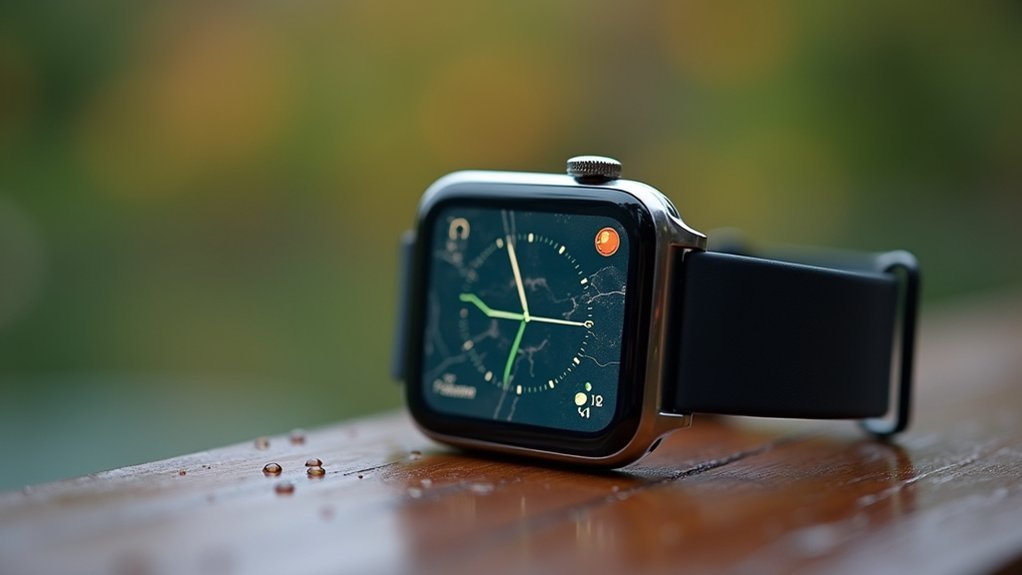
While GPS offers indispensable location tracking in wearables and mobile devices, it ranks among the most power-hungry features in modern technology.
Your wearable’s GPS module requires constant radio frequency activity to maintain connections with multiple satellites simultaneously.
This persistent communication demands significant energy as your device continuously receives and decodes satellite signals.
When your GPS performs complex triangulation calculations to determine your exact position, it further taxes the processor and battery.
The power drain intensifies in urban environments where buildings interfere with signals, forcing your device to work harder to maintain accuracy.
Cold starts—when you activate GPS after it’s been off for a while—are particularly demanding since your device needs extra power to reacquire satellite connections from scratch.
Manufacturers are constantly seeking solutions with higher energy density batteries to extend GPS runtime without making wearables bulky or uncomfortable.
How GPS Compares to Other Wearable Functions
Now that we comprehend why GPS technology demands so much power, let’s examine how it stacks up against other functions in your wearable device.
GPS consumes considerably more energy than accelerometers and other motion sensors, which operate in the microwatt range. This power gap creates significant challenges in meeting energy supply demands for wearable devices with GPS functionality. While newer GNSS chips have cut power usage by about 50%, GPS still draws considerable battery compared to most sensors.
GPS drains power substantially compared to microwatt motion sensors, despite newer chips being twice as efficient.
Your device’s heart rate monitor uses moderate power, while cameras drain batteries even faster than GPS. For connectivity, Bluetooth is more efficient than GPS, but LTE and Wi-Fi are typically more power-hungry. LoRa offers the best battery performance among communication technologies.
Many modern wearables use motion sensors to reduce GPS activation frequency, combining low-power sensors with occasional GPS corrections to extend battery life while maintaining accurate tracking.
Modern GPS Chip Technology and Power Requirements
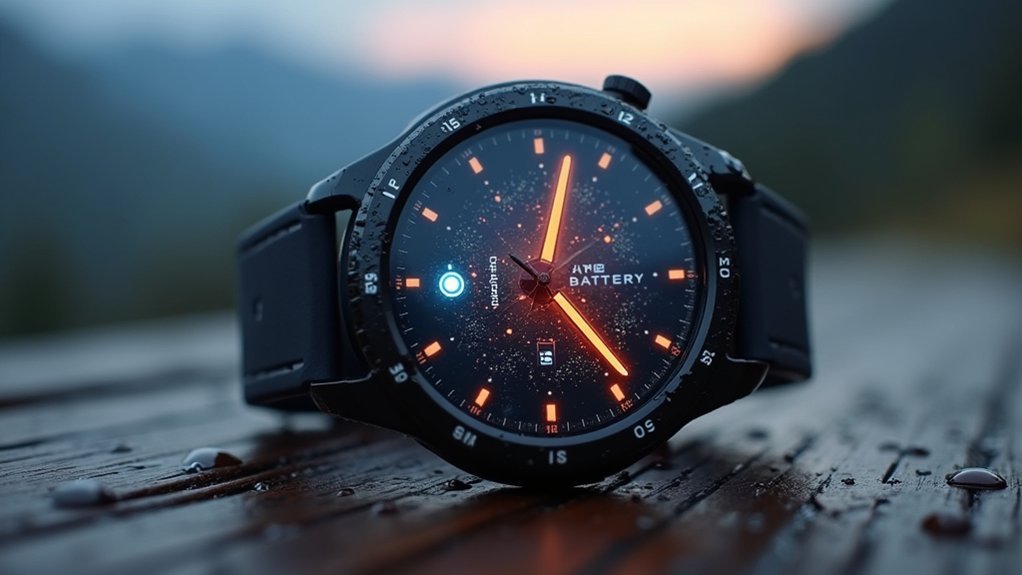
Modern GPS chip technology has evolved dramatically in recent years, delivering significant improvements in both power efficiency and performance. Nano GPS chips now fit into sleek wearables while maintaining accuracy and reducing energy consumption compared to traditional modules. Quantum GPS development offers potential breakthroughs in extended battery life while achieving unprecedented tracking precision.
Multi-frequency GPS technology enhances location precision in challenging environments while decreasing satellite lock time. Meanwhile, AI algorithms optimize GPS sampling by predicting your movement patterns and activating chips only when necessary.
| Technology | Power Impact | User Benefit |
|---|---|---|
| Nano Chips | 30-40% reduction | Slimmer device design |
| Multi-Frequency | 25% less hunting time | Accurate urban tracking |
| AI Optimization | Up to 50% savings | Longer battery life |
| Activity-Based | Variable consumption | Smarter power usage |
| Hybrid Positioning | Minimal GPS reliance | All-day wearing comfort |
These advancements mean your fitness tracker can now deliver precise location data without draining your battery as quickly as older models.
Smart Sampling: When and How GPS Activates
Your smartwatch’s GPS doesn’t run continuously; instead, adaptive positioning algorithms determine when precise location data is necessary.
Motion-triggered GPS activation uses your device’s accelerometer to detect when you’re moving, only powering up the GPS receiver during activity.
These smart sampling techniques dramatically reduce battery consumption while maintaining sufficient location accuracy for most fitness tracking and navigation needs. The SEAL device leverages these same techniques while providing near real-time monitoring capabilities for enhanced worker safety.
Adaptive Positioning Algorithms
While traditional GPS systems continuously poll for location data, adaptive positioning algorithms revolutionize how devices manage location tracking by intelligently determining when GPS activation is necessary.
These algorithms optimize your wearable’s battery life without sacrificing essential location functionality.
Your device employs sophisticated techniques to conserve power:
- Sampling rates adjust automatically based on your movement speed and surrounding environment
- Deep learning models correct positioning errors while minimizing unnecessary GPS activations
- Two-stage filtering systems combine adaptive Kalman filters with other sensors for reliable positioning
- Context-aware scheduling activates GPS only during relevant activities or times of day
Modern wearables implement specialized algorithms that can help mitigate multipath effects which significantly impact positioning accuracy in urban environments.
Motion-Triggered GPS Activation
Instead of continuously draining battery power, motion-triggered GPS activation represents a breakthrough in location tracking efficiency. Your wearable only activates GPS when you’re actually moving, thanks to accelerometers and gyroscopes that detect meaningful motion before triggering location services. Devices like the BoBo Motion 2.0 utilize real-time monitoring to optimize power consumption during activity tracking.
| Sensor Type | Function | Battery Impact |
|---|---|---|
| Accelerometer | Detects linear movement | Very low |
| Gyroscope | Measures rotation | Low |
| GPS | Pinpoints location | High |
| Sensor Fusion | Combines motion data | Minimal |
This smart sampling approach creates significant power savings by replacing constant GPS operation with low-power motion sensing. Your device can dynamically adjust sampling frequency based on your activity intensity, extending battery life while maintaining tracking accuracy during exercise or navigation. These implementations carefully balance motion sensitivity thresholds to avoid false activations that would unnecessarily drain your battery.
Battery Capacity Challenges in Compact Wearables
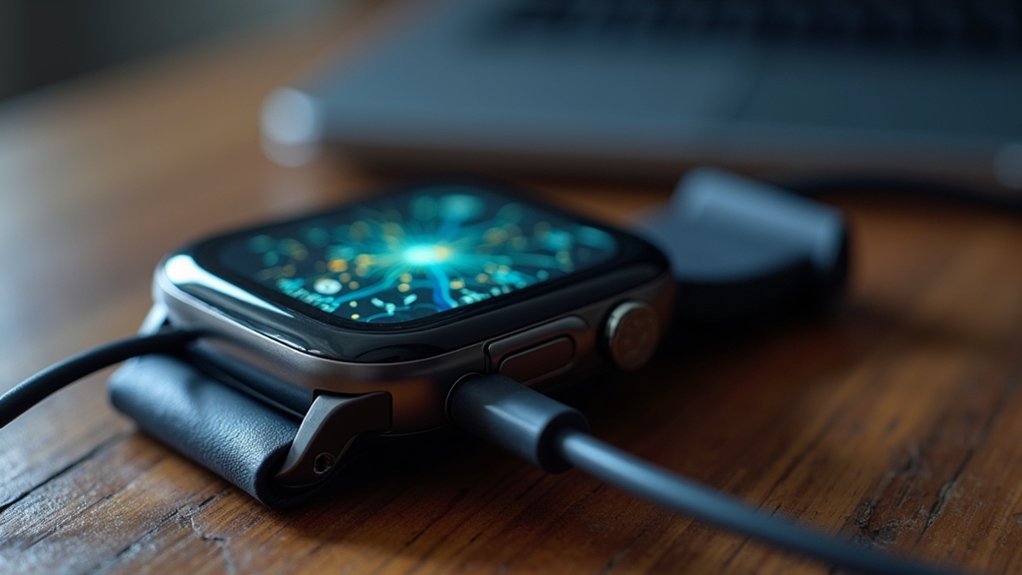
When designing compact wearable devices like fitness trackers and smartwatches, manufacturers face considerable challenges in balancing battery capacity with size constraints.
Your wearable’s sleek profile comes at a cost – limited space for power storage while demanding features like GPS drain energy rapidly.
Battery engineers must innovate within these tight confines to maximize runtime without sacrificing aesthetics or comfort:
- Physical dimensions restrict battery size, forcing tradeoffs between device functionality and operation time
- Energy-intensive features compete for power from already limited capacity batteries
- Thermal management becomes critical as compact batteries generate more heat during GPS usage
- Manufacturers explore innovative designs and materials to squeeze maximum capacity into minimal space
This fundamental tension between size and power explains why your GPS tracking considerably reduces battery life in compact wearables. Ultralife Thin Cells offer a solution with their high energy density and compact 1.2 mm design.
Motion Sensors as GPS Power-Saving Allies
Motion chips work alongside GPS by calculating position changes locally during GPS-off intervals, greatly reducing power consumption in your wearable device.
Your device’s accelerometer acts as a gatekeeper, waking the power-hungry GPS only when it detects meaningful movement rather than minor vibrations or false signals.
This intelligent pairing creates an efficient tracking system that can extend battery life by up to 80% compared to constant GPS operation. Bosch’s new BHI160BP smart sensor utilizes Pedestrian Dead Reckoning to approximate position when GPS is in sleep mode.
Motion Chip Synergy
Although GPS technology provides precise location tracking, it doesn’t have to be a battery killer when paired with motion sensors. By integrating these technologies, your wearable can intelligently activate GPS only when necessary, markedly extending battery life while maintaining accuracy.
The synergy between motion sensors and GPS creates powerful efficiency through:
- Adaptive tracking that adjusts location sampling frequency based on your movement patterns
- Context awareness that determines when precise location data is truly needed
- Automated power management that switches between different modes based on activity
- Real-time processing of sensor data to make intelligent GPS activation decisions
This technological integration isn’t just theoretical—devices using Motorola Oncore chips and other low-power technologies demonstrate how motion detection can dramatically reduce power consumption while maintaining location accuracy. Many modern applications leverage the Motorola Binary protocol at 9600 baud to optimize communication between the GPS receiver and the device’s processor.
Accelerometer Wake Protocols
Smart devices utilize accelerometer wake protocols as the gatekeepers of GPS power consumption. These motion sensors detect significant movement before activating power-hungry GPS modules, allowing your device to remain in deep sleep when stationary.
When you’re on the move, the accelerometer triggers an interrupt, signaling that location tracking might be needed. Your device typically waits 10-60 seconds after detecting motion before activating GPS, preventing battery drain from false positives. This approach aligns with research showing that current draw during sleep can be maintained below 1mA with proper power management techniques.
You’ll see dramatic battery improvements with properly tuned settings. Sensitivity thresholds and wake delays can be adjusted to match your activity patterns.
Too many wake-ups? Your threshold may be too low. Set delays to zero for responsiveness, but expect higher power consumption.
Combining accelerometer interrupts with scheduled timer wake-ups creates the ideal balance between tracking accuracy and battery conservation.
Real-World Battery Impact: Sport Watches vs. Smartwatches
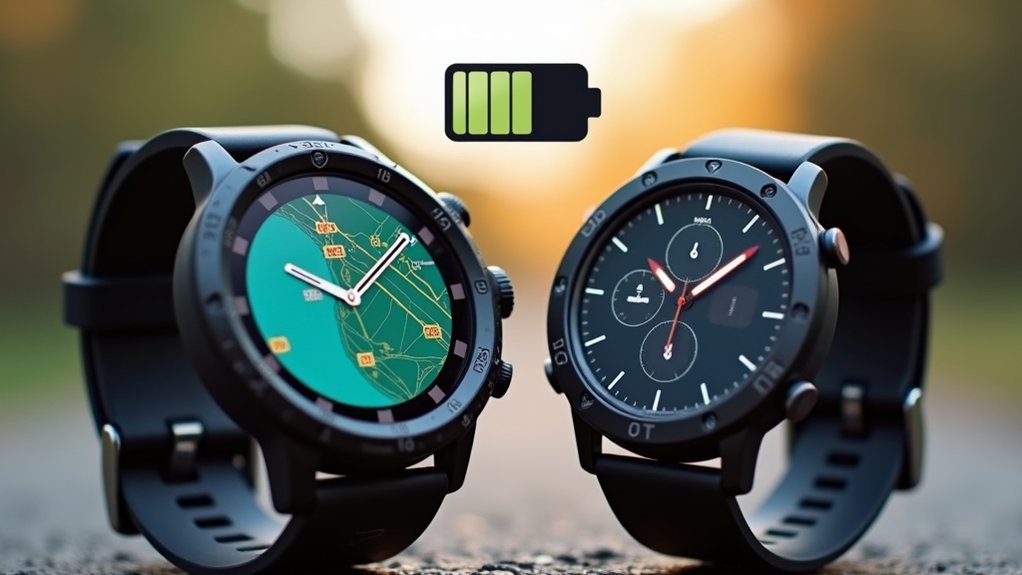
When comparing the battery performance of GPS-enabled wearables, sport watches and smartwatches demonstrate considerable differences in power consumption.
Sport watches typically last longer because they’re designed with activity-specific GPS activation, while smartwatches drain faster due to their additional features and continuous connectivity requirements.
- Sport watches can last several days with intermittent GPS use, but continuous tracking reduces this to hours.
- Smartwatches utilize advanced power management to minimize GPS battery drain when not actively needed.
- Your app usage patterns considerably impact battery life, especially with background processes running.
- Both device types employ power-saving modes, though smartwatches need these more frequently due to their broader functionality.
You’ll notice the greatest battery differences during extended GPS tracking sessions, where dedicated sport watches generally outperform full-featured smartwatches. Many wearable devices could benefit from using ultra-low-power motion sensors instead of GPS for certain tracking functions to conserve battery power.
Optimizing Settings for Extended GPS Usage
Extending your GPS device’s battery life requires thoughtful management of its power-hungry positioning system.
Start by enabling motion-based activation so GPS only engages when you’re actually moving. Most devices offer preset GPS profiles—use the 60-second interval for hiking rather than the 1-second running setting when precision isn’t critical.
Motion-sensing GPS activation conserves power. Select longer interval profiles when minute-by-minute precision isn’t essential for your journey.
Take advantage of intermittent GPS fixes (every 5-10 minutes) instead of continuous tracking. If your device supports it, enable multipath mitigation and selective constellation use to reduce processing demands. The newest chips like UBX-M10150-CC achieve 50% power reduction compared to previous generations.
In urban environments, consider switching to BT/Wi-Fi positioning when battery falls below 20%.
For multi-day adventures, schedule your device to disable GPS during rest periods or overnight stops.
Modern wearables with predictive location modeling can intelligently activate GPS only at critical waypoints, dramatically extending battery performance.
Future Innovations in Low-Power GPS Technology
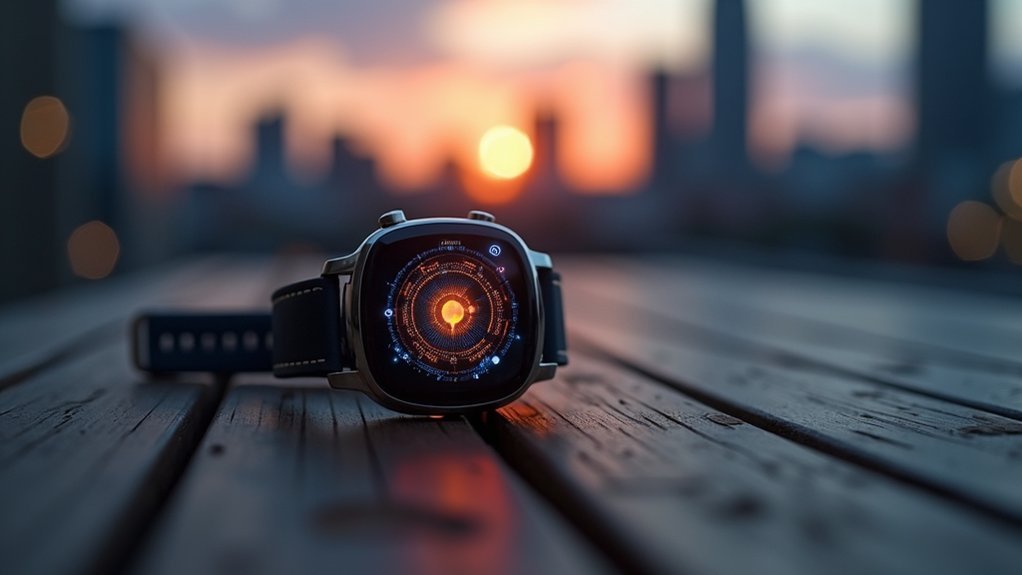
While traditional GPS technology notoriously drains batteries, revolutionary advances in low-power positioning are set to transform how we track location.
Cloud-based computation shifts processing away from your device, sending only raw satellite data instead of calculating coordinates on-device, extending battery life up to 10 times.
Next-generation hardware platforms like the u-blox M10 consume less than 15mW while maintaining sub-2.5 meter accuracy in tiny 4×4mm packages perfect for wearables. Innovative technology now achieves position calculation with only 3 satellites instead of the traditional minimum of four.
- Hybrid architectures combine cellular triangulation with sparse GPS sampling
- Advanced duty cycling uses motion triggers to activate GPS only when needed
- Predictive algorithms minimize unnecessary location checks during inactivity
- System-level integration with LPWAN networks (LTE-M/NB-IoT) further reduces power needs
You’ll soon enjoy wearables with location tracking measured in weeks, not hours.
Frequently Asked Questions
Does GPS Accuracy Decrease When Power-Saving Modes Are Enabled?
Yes, GPS accuracy decreases when you enable power-saving modes. Your device will take fewer position fixes and spend less time filtering signal interference, resulting in less precise tracking of your routes, pace, and distance.
Can Replacement Batteries Improve GPS Runtime in Older Wearables?
Yes, replacement batteries can improve GPS runtime in older wearables if they offer higher capacity than your original battery. However, you’ll face compatibility issues and potential warranty concerns when upgrading batteries in aging devices.
How Does Temperature Affect GPS Battery Consumption in Wearables?
Temperature considerably impacts your wearable’s GPS battery consumption. In cold weather, batteries drain faster as they’re less efficient. Heat also reduces battery life, while moderate temperatures optimize your GPS performance and extend runtime.
Do Third-Party GPS Apps Drain More Battery Than Native Ones?
Yes, third-party GPS apps typically drain more battery than native ones. You’ll notice they run extensive background processes, lack system-level optimizations, and often request additional permissions that increase battery consumption during navigation.
Can Software Updates Significantly Improve GPS Power Efficiency?
Yes, software updates can greatly improve GPS power efficiency. You’ll notice better battery life after updates that optimize tracking algorithms, adjust polling frequencies, and implement smarter power management techniques for your device’s GPS functionality.
In Summary
GPS can be a major battery drain on your wearable, but you’ve now got strategies to extend your device’s life. By adjusting sampling rates, leveraging motion sensors, and optimizing settings, you’ll squeeze more hours from each charge. As technology advances, you’ll see even more efficient GPS solutions. Until then, balance your tracking needs with battery limitations for the best experience on your fitness journeys.

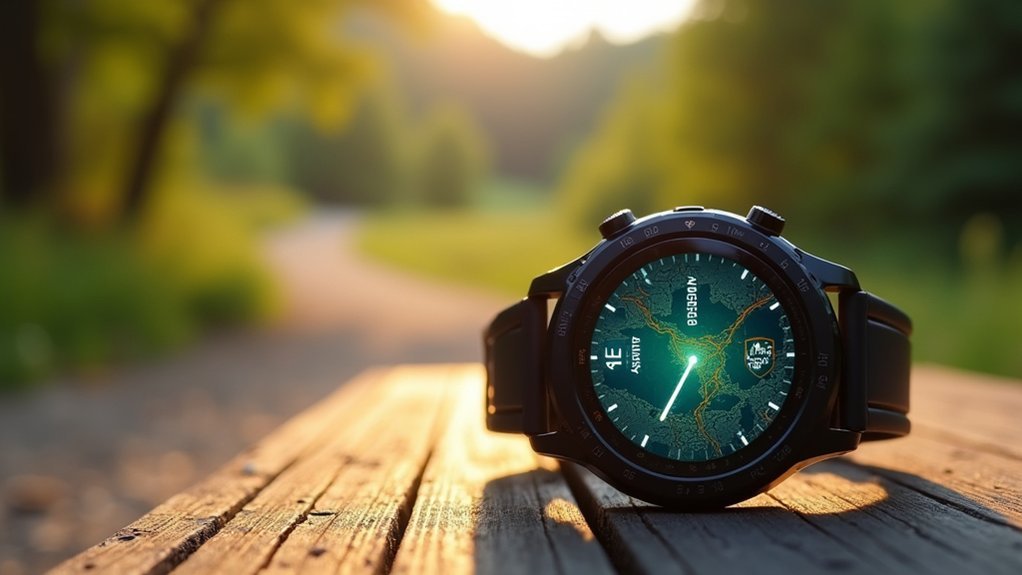



Leave a Reply